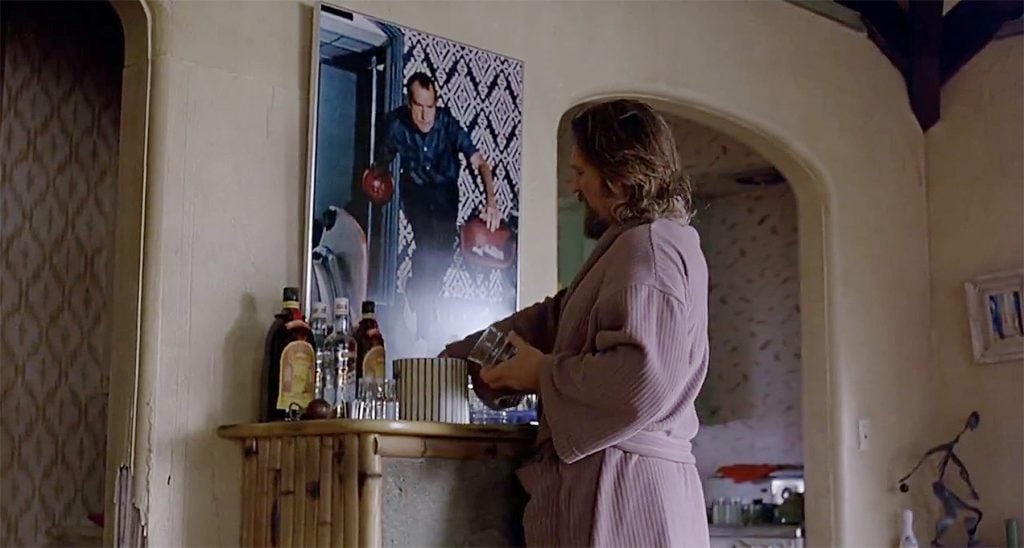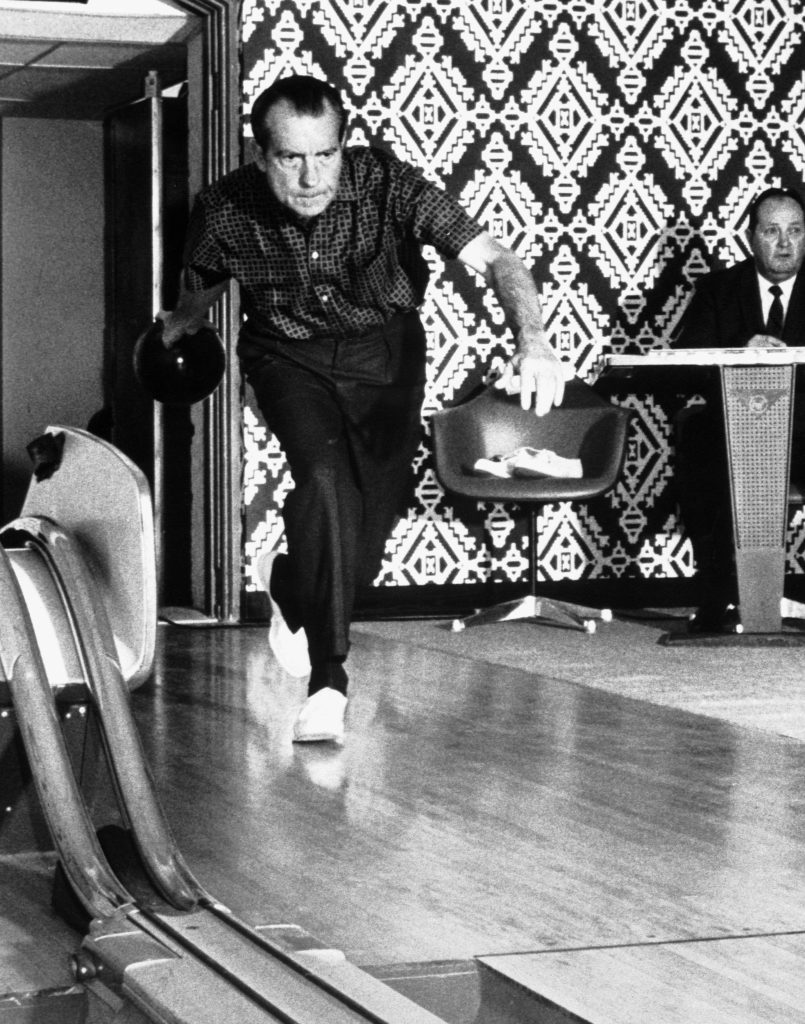Pop Culture
As Seen on ‘The Big Lebowski’: A Photographic Ode to Bowling
The huge photograph is seen over the Dude’s bar as he mixes himself a drink.

The huge photograph is seen over the Dude’s bar as he mixes himself a drink.

Brian Boucher

Cult classic The Big Lebowski (1998) has spawned countless tributes, an annual festival, and even a tongue-in-cheek religion, Dudeism (aka the Church of the Latter-Day Dude). It’s quite an afterlife for a film that received mixed reviews on its release.
Tucked away in a fairly unremarkable scene is an image of the 37th President of the United States, Richard Milhous Nixon, bowling at the executive office building. What could it possibly mean? While it might seem to be too good to be true, it’s definitely real, and it may have been there to indicate something about the main character.

President Richard Nixon bowls. Photo: © CORBIS/Corbis via Getty Images.
Written by the renowned duo Joel and Ethan Coen (the brothers behind classics like Raising Arizona, Fargo, and No Country for Old Men) and set in 1991 Los Angeles, the film stars Jeff Bridges as Jeffrey “The Dude” Lebowski, who wants nothing but to hang out, drink White Russians, and go bowling.
The plot is convoluted in the extreme. It all starts when thugs working for porn kingpin Jackie Treehorn (Ben Gazarra) mistake the Dude for a millionaire of the same name (David Huddleston), nicknamed the Big Lebowski to distinguish him from Bridges’ Lebowski. The Big Lebowski’s wife Bunny (Tara Reid) owes Treehorn money, and the thugs break into the Dude’s home and urinate on a favorite rug (“It really tied the room together,” says the Dude in an oft-quoted line). After the Dude visits the Big Lebowski seeking compensation, he’s enlisted to deliver ransom money to rescue Bunny, who has supposedly been kidnapped (in what turns out to be a fake kidnapping).
Various side-splitting episodes ensue, with a stellar supporting cast. Maude Lebowski (Julianne Moore) is an artist who creates paintings inspired by vaginas while swooping through the air in her vast studio on a harness. Quirky bowler Jesus Quintana (John Turturro) licks a bowling ball. A trio of self-declared nihilists (featuring Flea of the Red Hot Chili Peppers) threaten to assault the Dude, screaming that “We care about nothing!” All ends well when Bunny returns, and the narrator (Sam Elliott) weighs in with another quotable line: “The Dude abides.”
So what’s up with the photo? It appears as the Dude mixes a white Russian while listening to phone messages. Right there, hidden in plain sight over his bar, hangs the shot of Nixon bowling. (I’ve watched the film several times and had never noticed it.)
The Dude leans liberal; he proclaims himself as one of the original authors of the Port Huron Statement, a 1962 political manifesto of the student activist movement Students for a Democratic Society. But if you’re a bowler, the Nixon image seems to say, you’re welcome in the Dude’s world. In our divided society, the Dude’s accepting attitude could be an inspiration to us all—to look past our differences and to head to the lanes. Whether liberal, conservative or otherwise, we’ll see you there.